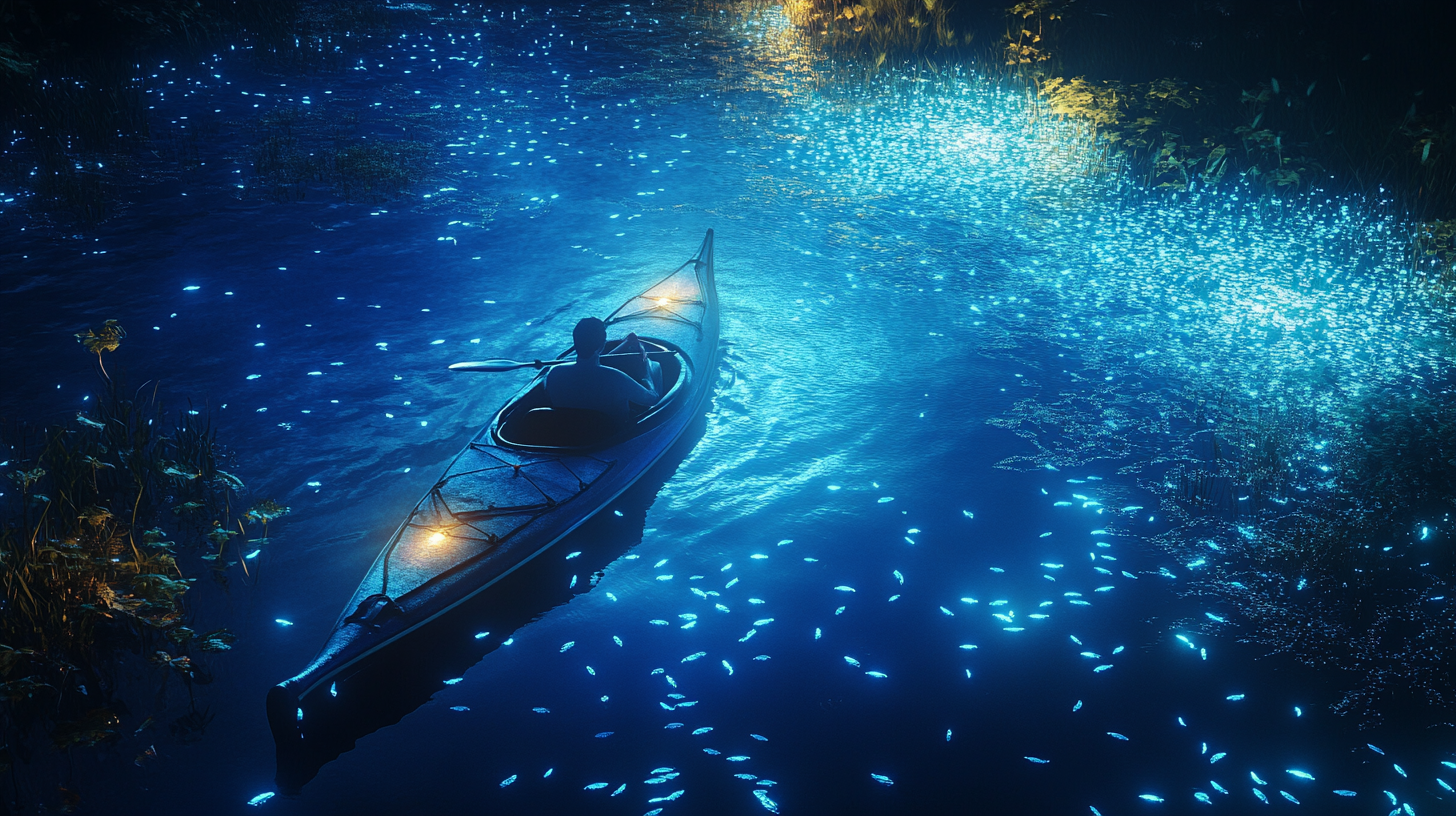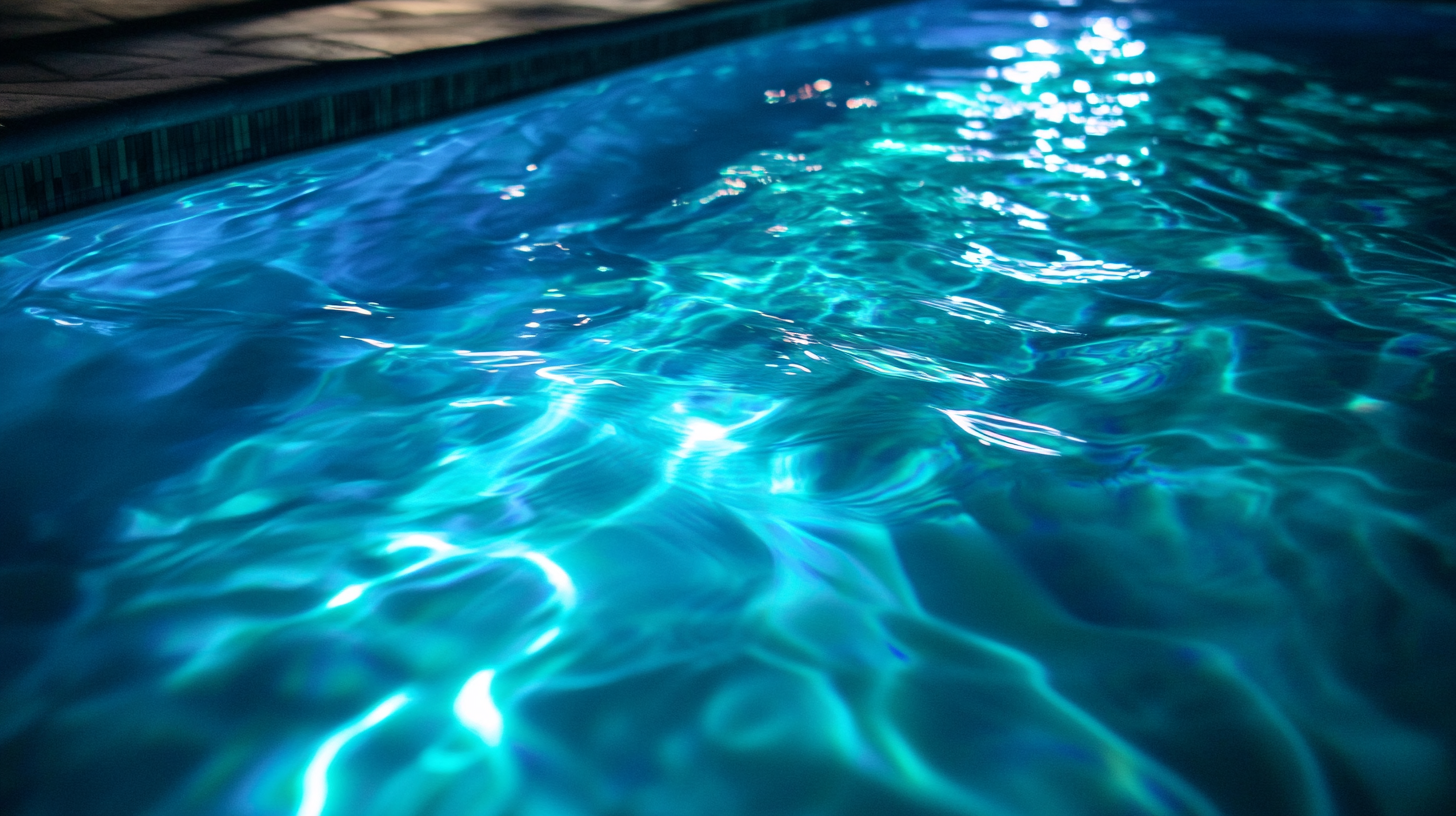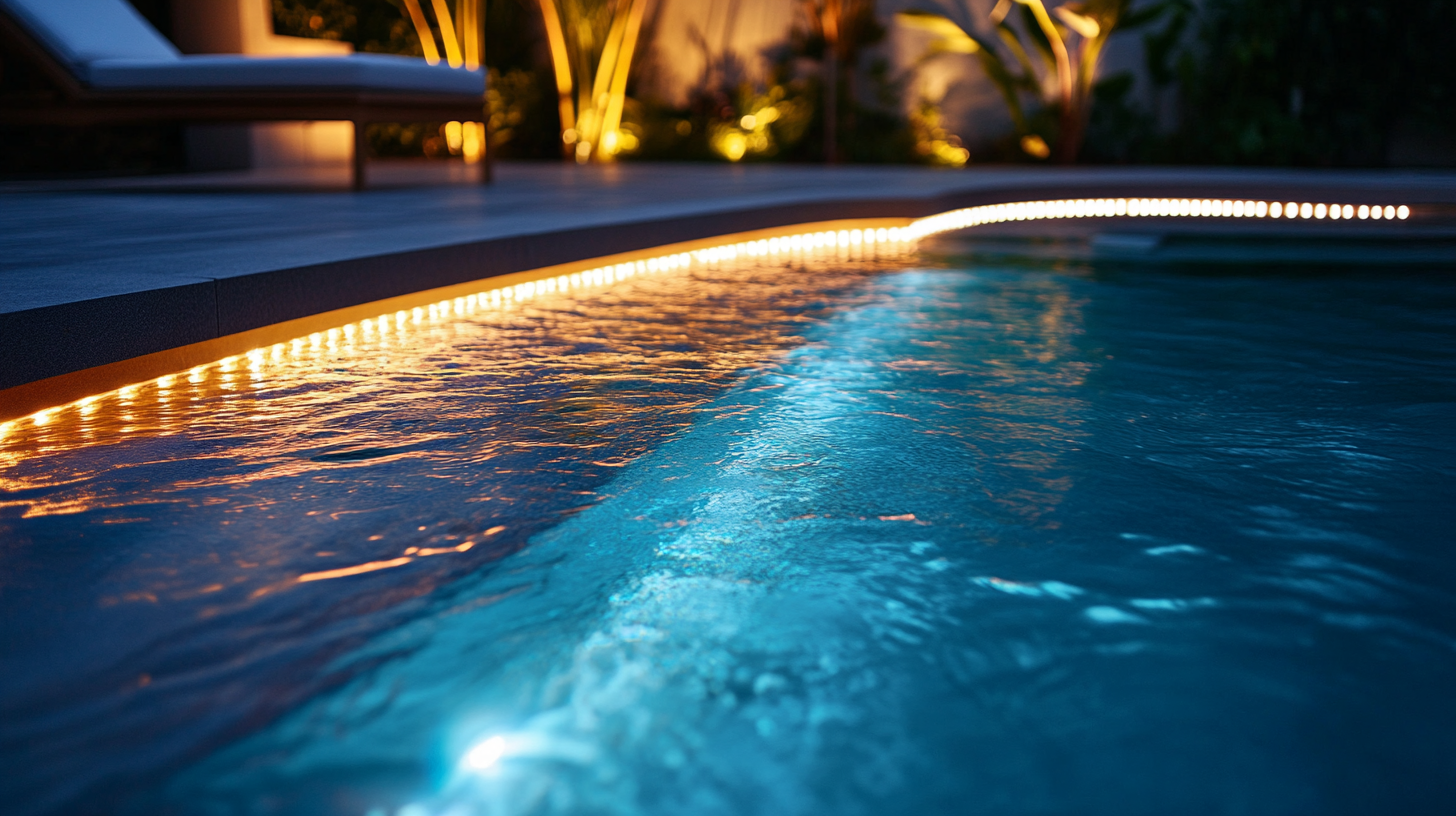Underwater boat lights for kayaks and small watercraft
Adding underwater lights to your kayak or small watercraft isn’t just about the cool factor—although there’s no denying the mesmerizing glow these lights create as you glide through dark waters. The real magic happens when you realize just how many practical benefits they offer. First and foremost, these lights significantly enhance your visibility during nighttime adventures. Picture yourself paddling through a peaceful, moonlit lake; with underwater lights, your kayak becomes a beacon, easily spotted by other boaters or anglers, reducing the risk of accidents.
But the advantages don’t stop there. If you’re a fishing enthusiast, these lights can actually improve your catches. Fish are naturally attracted to the illumination, especially in darker waters where they gather around the light, giving you a better chance at landing the big one. Whether you’re into night fishing or just want to enjoy the serene beauty of the aquatic world below, underwater lights turn an ordinary boating experience into a magical, immersive journey.
Even if you’re exploring shallow waters or sandy beaches, the added illumination helps in spotting underwater obstacles, like rocks or logs, before they become a problem. For navigational purposes, the lighted path helps guide you safely back to shore, particularly in unfamiliar or less-traveled waters. So go ahead—consider outfitting your kayak or small watercraft with underwater lights and watch as your nocturnal boating adventures are transformed into something truly extraordinary.
Types of underwater lights available
When it comes to equipping kayaks and small watercraft with underwater lights, it’s important to know that not all lights are created equal. There’s a wide variety of options, each designed to cater to different needs, preferences, and types of journeys. By understanding the different types available, you can confidently choose the lights that will best enhance your nighttime boating adventures.
First up, we have LED underwater lights. These are the most popular option for kayaks and small watercraft, and for good reason. LEDs are energy-efficient, meaning they won’t put a heavy drain on your battery, which is crucial when you’re out on the water for extended periods. Their compact size allows for easy installation, and their durability ensures they can withstand the harsh marine environment. LED lights also offer a broad spectrum of colors—whether you want a classic white glow or a vibrant blue, there’s an LED option to suit your style.
Another option to consider is halogen underwater lights. While they’re not as energy-efficient as LEDs, halogen lights are known for providing an exceptionally bright and warm light. For those who prioritize a powerful beam to illuminate the waters beneath their kayak or small boat, halogen lights can be a viable, though less common, choice. However, keep in mind that they generate more heat and typically have a shorter lifespan compared to LEDs.
If you’re after something even more specialized, HID (High-Intensity Discharge) lights could be worth considering. Known for their intense brightness, HID lights are often used for larger vessels but can be adapted for smaller watercraft as well. These lights emit a focused beam that penetrates deeper into the water, which could be a game-changer during night fishing or in environments where visibility is challenging. The downside is that they tend to be bulkier, more expensive, and require more power to operate, making them less practical for kayaks unless you’re prepared for the trade-offs.
For an environmentally-friendly option, solar-powered underwater lights are gaining traction among eco-conscious boaters. These lights harness the sun’s energy during the day and automatically turn on as the sun sets. While they might not be as powerful as traditional LED or HID lights, they offer the convenience of not needing to worry about battery life, making them ideal for casual nighttime paddlers who enjoy serene, low-impact adventures.
Finally, submersible lights are another exciting category. These lights are designed to be completely submerged while in use, providing a dramatic, immersive effect. Whether you’re keen on observing marine life beneath your kayak or simply want to create a dazzling underwater spectacle, submersible lights can deliver. They’re often used in combination with surface-mounted lights to create a comprehensive illumination system that brings both the water and the surface to life.
Choosing the right type of underwater light for your kayak or small watercraft will depend largely on your specific needs, whether you’re prioritizing energy efficiency, brightness, environmental impact, or the sheer aesthetic appeal. Whichever you choose, rest assured that the right lights will totally transform your boating experiences after the sun goes down.
Installation and placement tips
When it comes to installing underwater lights on your kayaks or small watercraft, proper placement is key to ensuring you get the best possible performance and aesthetic effect. Start by identifying the areas on your boat where the lights will have the maximum impact. For kayaks, common spots include the sides and across the bottom, where the lights can cast a wide, ambient glow that enhances your visibility without disturbing the balance of your vessel. For small watercraft, mounting the lights under the hull or around the transom usually provides the best results.
Before you begin the installation, double-check that the chosen spots have adequate access to wiring and are free from obstructions or sharp edges that could damage the lights over time. It’s also helpful to map out the wiring beforehand, so you know exactly how much length you’ll need and where you’ll be routing it. Remember, it’s always a good idea to use waterproof connectors and marine-grade wires to avoid any issues related to water ingress or corrosion down the line.
The angle at which you place the underwater lights can dramatically change the effect they produce. Mounting the lights at a slight angle outward or downward helps spread the illumination across a wider area, making it less intense directly beneath your vessel and more evenly distributed around it. This is particularly useful if you’re interested in attracting fish or just want to create a stunning visual experience as you glide through the water.
When dealing with LED, halogen, or HID lights, many boaters find that it’s useful to experiment with the positioning before finalizing the installation. To do this, temporarily attach the lights with zip ties or duct tape and take your craft for a test run at night. See how the lights look in action—a little adjustment could go a long way toward perfecting the illumination and ensuring that it enhances your boating adventure just the way you imagined.
Pay attention to the balance and weight distribution when placing the lights, especially on kayaks. Adding lights to just one side can create uneven weight, potentially making your kayak harder to steer or control. Also, try to keep the lights low-set on your vessel to maintain its stability, especially in choppy waters. While some boaters prefer to place their lights higher up to create a dramatic glowing perimeter, this can sometimes throw off your boat’s center of gravity.
Always follow the manufacturer’s instructions for installation, and don’t hesitate to seek professional help if you’re not confident in your abilities. Some lights may require you to drill into your vessel, a process that should be done with extreme care to avoid damaging the hull or compromising its watertight integrity. Whether you DIY or go pro, taking the time to install your underwater lights properly will ensure better performance, improved safety, and an overall more enjoyable nocturnal boating experience.
Safety considerations
When using underwater lights on your kayaks or small watercraft, it’s essential to prioritize safety to ensure not only a successful, but also a secure nighttime adventure. First and foremost, always make sure that the underwater lights you choose are specifically designed for marine applications. Using non-marine grade lights may pose risks, such as electrical shorts, which can lead to dangerous situations on the water, especially at night when visibility is already compromised.
It’s also important to consider the potential distraction or impact that brightly colored underwater lights can have on other boaters. While the vibrant hues of LED lights add a cool aesthetic to your watercraft, excessively bright or flashing lights may disorient other nearby water users, possibly causing accidents. For this reason, you should select lighting levels that are adequate for your needs without being overly intense to others in the vicinity. Opting for colors like blue or green is often a good choice, as these are generally less glaring compared to bright white or red lights.
Another crucial factor is ensuring that your lighting setup is compliant with local regulations. Different states or countries may have specific rules governing the types and use of underwater lights on recreational watercraft. For example, some regions prohibit the use of certain colors or flashing patterns that might be easily confused with navigation buoys or emergency signals. Before heading out, always check with local maritime authorities to ensure that your lighting does not inadvertently contravene existing laws, which could result in fines or other penalties.
Electrical safety can’t be overlooked either. When installing your underwater lights, make sure that all electrical connections are waterproof and that cables are securely fastened and adequately insulated. Using marine-grade wiring, connectors, and switches specifically designed for wet environments significantly reduces the risk of short circuits or electrical fires. Additionally, routinely inspect your cables and connections for any signs of wear or corrosion, and replace components as necessary to maintain the safest setup possible.
The physical installation itself can have safety implications. If you need to drill into your kayak or small watercraft to mount your lights, be extremely cautious to avoid damaging any critical structural components, such as the hull. Compromising the structural integrity of your watercraft not only reduces its performance but could also lead to leakage concerns or even capsize in worst-case scenarios. If in doubt, consider seeking professional assistance to ensure the job is done safely and correctly.
Balancing your boat is another safety aspect you shouldn’t overlook. Unevenly distributed lights or improperly mounted equipment can affect your vessel’s stability—especially on smaller crafts like kayaks. Excess weight on one side can create steering challenges and increase the risk of capsize, particularly in rough waters or during sudden maneuvers. Always distribute lights and related hardware as evenly as possible, or compensate through the placement of additional counterweights where necessary.
Finally, keep in mind that underwater lights, while beautiful and functional, can attract marine life, which might not always be welcomed in certain waters. If you frequently boat in areas known for potentially hazardous wildlife, such as aggressive fish species or even alligators, be cautious about keeping the lights on continuously, as this might draw them closer to you and increase the risk of unwanted encounters.
In summary, while underwater lights can significantly enhance your nocturnal boating experiences, it’s vital to account for all safety considerations—from electrical best practices and compliance with local laws, to careful installation and being mindful of your surroundings. Proper safety measures will help you fully enjoy the benefits of these luminous additions without compromising your well-being on the water.
Maintenance and care of your lights
Taking good care of your underwater lights is crucial for ensuring their longevity and consistent performance, whether you’re out on a casual paddle or a nocturnal fishing expedition. Proper maintenance helps prevent issues that could leave you—and your kayak or small watercraft—in the dark at an inconvenient moment.
One of the simplest yet most effective steps you can take is to regularly clean your underwater lights. Exposure to saltwater, algae, and other contaminants can lead to buildup on the light’s lens, diminishing the brightness and overall effectiveness. A soft cloth, some freshwater, and a mild, non-abrasive cleaner are usually all you need to keep the lenses crystal clear. For those dealing with more stubborn grime, a soft-bristle brush can help scrub the surface without scratching the lens. Just make sure to avoid harsh chemicals or abrasive pads, as these can damage the protective coating on the lens and reduce the light’s lifespan.
Another vital aspect of maintaining your underwater lights is monitoring them for any signs of water ingress. Even though these lights are designed to handle wet environments, seals and gaskets can wear out over time. Periodically check the housing for cracks and give special attention to areas around seals and wire entry points. If you notice condensation inside the light housing, it’s a sign that water has made its way inside, which could lead to electrical shorts or outright failure if not addressed promptly. In such cases, replacing the seals or the light itself may be necessary to restore its watertight integrity.
Routine battery checks are especially crucial for kayaks and small watercraft that rely on onboard power sources for lighting. Low battery levels not only reduce the brightness of your underwater lights but can also leave you with a drained battery when you need it most—for example, to power your navigation lights or communication devices. Make it a habit to inspect and charge your batteries before each outing, ensuring that they’re capable of handling the duration of your trip. Investing in a good quality marine battery charger and regularly testing your power system can go a long way in preventing unexpected power losses.
Regularly inspect all wiring and connections as part of your ongoing maintenance routine. Corrosion is the enemy of any marine electrical setup, and even the best waterproof connectors can fall victim to it over time. Look for any visible signs of fraying, corrosion, or loose connections on your wires, and use dielectric grease to protect terminals and connectors from moisture. If you notice any compromised wiring, replace it immediately with marine-grade wires and connectors. This proactive approach keeps your system functioning smoothly and reduces the risk of shorts or other electrical issues that could jeopardize your safety on the water.
For those with more advanced lighting systems, such as those involving multiple light sources or control panels, firmware updates and software maintenance might be necessary. Some of the latest LED underwater lights come with remote control features or smartphone apps, which might occasionally require updates to optimize performance. Check with your manufacturer for any necessary maintenance related to these features and always back up any settings before performing updates.
Even the most well-maintained systems can suffer from bulb burnouts or LED failures over time. It’s always a good idea to have spare bulbs or LED modules on hand as part of your boating toolkit. That way, you won’t be left scrambling to replace a light while you’re out on the water. If you’re unsure how to replace these components, consult your light’s manual or consider watching guided tutorials to ensure you carry out the task correctly.
Storing your kayak or small watercraft in a way that protects the underwater lights is yet another important factor in prolonging their lifespan. If possible, avoid long-term exposure to direct sunlight or extreme temperatures, as these conditions can cause components to degrade more quickly. When your vessel is out of the water, cover the lights or store the boat in a shaded or climate-controlled environment to minimize wear and tear.
By committing to regular maintenance, you not only prolong the life of your underwater lights but also ensure they perform at their best every time you venture out. Even a small investment of time in upkeep can make a big difference in the long run, allowing you to enjoy the mesmerizing glow and functional benefits of your lights for many boating adventures to come.


